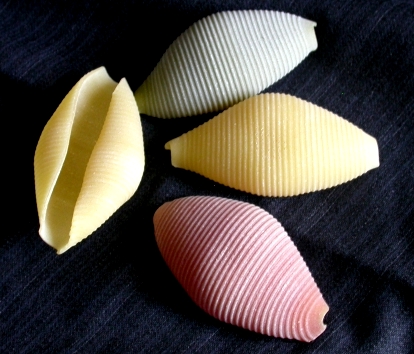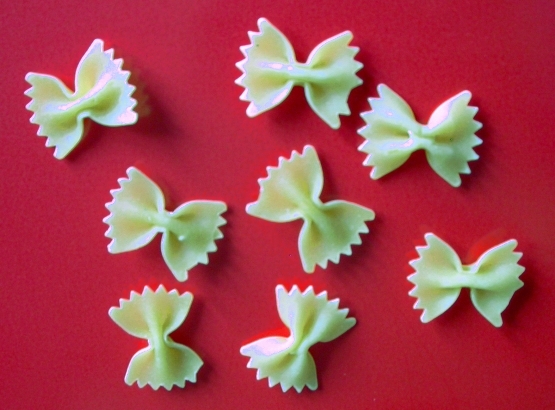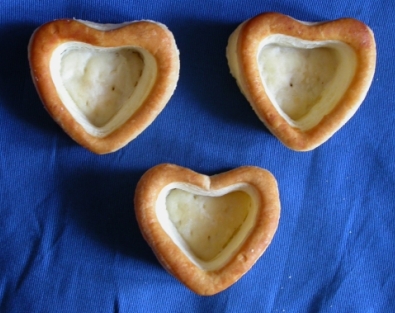
This paste is 7 cm long and has three colors.
It is appreciated for its beauty and its intertwined flavors.
Italy, 2006.

Man's need for beauty is also expressed in food.
For the shape of an alimentary pasta the beauty of butterflies has been chosen.
It's a case of imitation of nature, in which the representation is limited only to the wings.
Italy, 2006.

Vol-au-vent in the shape of a human heart to be stuffed as an appetizer with mayonnaise, vegetables and various fillings to taste.
The human heart is a body equipment such as hands, brain, eyes, and all other organs.
Since the Middle Ages, about a thousand years ago, in Europe, the heart has become a symbol of goodness and love. It has always been depicted in a shape similar to these images.
Since the Middle Ages, about a thousand years ago, in Europe the heart has become a symbol of goodness and love. It has always been depicted with a shape similar to that of the image.
Despite the simplicity of the product, this food is considered beautiful.
Canapé in wheat pastry, height 5 cm, Italy, 2006.
Copyright©1999-2020 by Museum of the Origins of Man, all rights reserved.